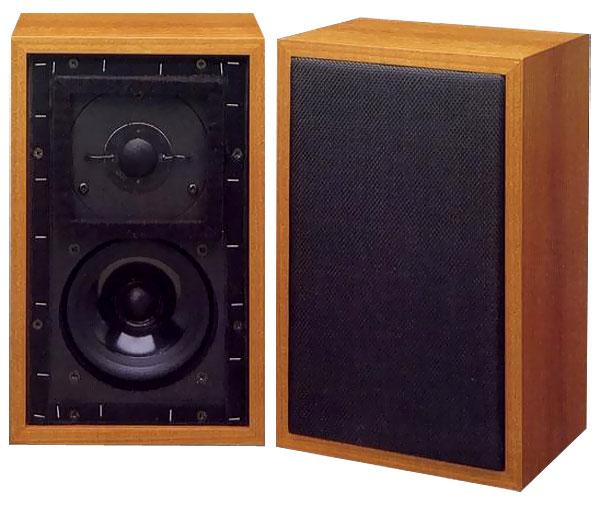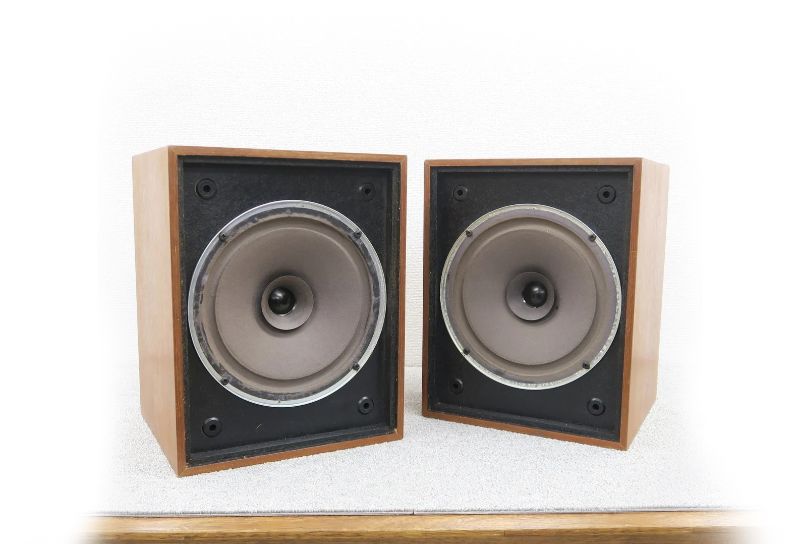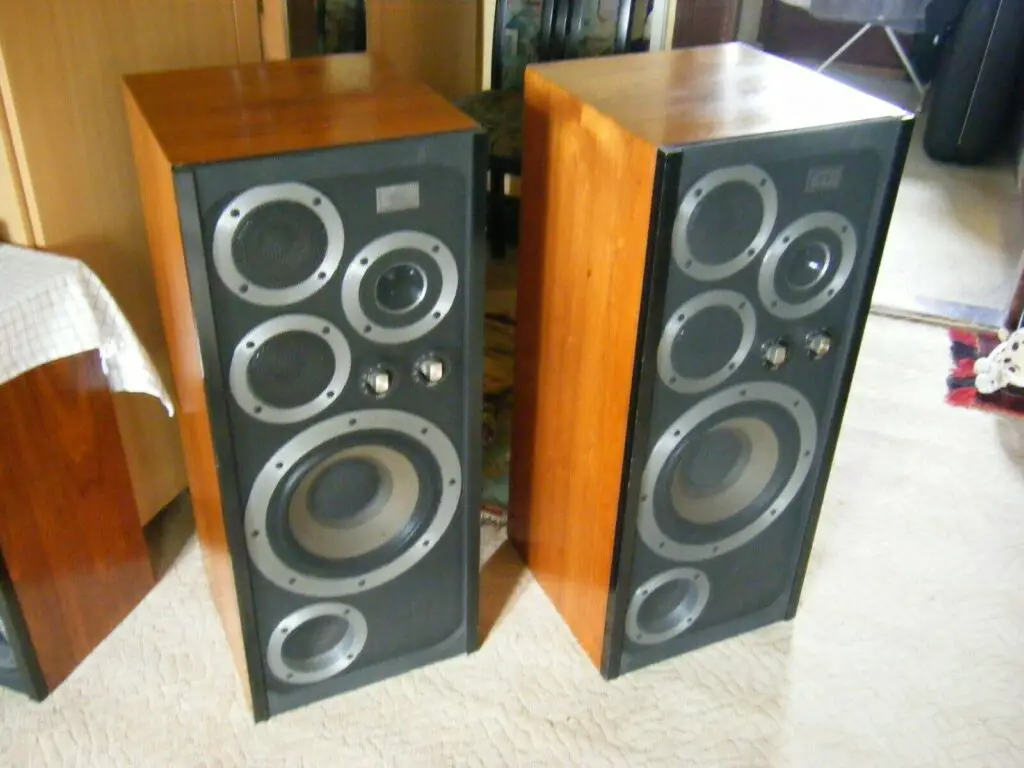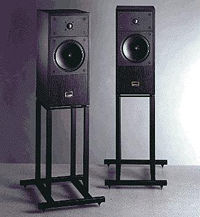The BBC’s ‘monitoring loudspeaker type LS3/5a’ has gone down in history. Some say it possesses unique features not found in any succeeding speaker, while others believe it is exaggerated and unfairly revered. Whatever your opinion is on this small box, there’s no doubting that it’s a major product in its own right…
The performance of this small display in relation to its physical size was revolutionary. Prior to the introduction of the LS3/5a, all small speakers were thought to be inferior to bigger ones in terms of sound quality. There was no way a little design could be better than a large one in some regards. You can’t deny that the LS3/5a changed this preconception, whether you like it or not. Spendor’s Philip Swift describes it as “a loudspeaker that provides the impression of having a lot more bass than it actually does.” “No one has spent as much work into making a tiny, low-coloration loudspeaker as the BBC.”
The narrative begins in the early 1970s, when the Beeb decided that a small speaker was needed for their outside broadcast trucks. This inspired additional research in the corporation’s Research Department at Kingswood Warren, under the direction of H.D. (Dudley) Harwood. T.E. Sommerville and D.E. Shorter headed a team of researchers who developed a quarter-scale monitor as part of their research into acoustic scaling. According to folklore, despite only being built to achieve 400Hz, it was supposed to have good performance down to 100Hz for speech-related reasons. It worked surprisingly well with music program content, especially when wall-mounted, according to the researchers. The LS3/5 was a speaker that was used in mobile TV control rooms for producers to monitor mixing desk output.
Then, shortly before the BBC was about to issue licenses to a number of companies – as well as the BBC’s own Equipment Department – to manufacture it, the drive unit supplier changed some characteristics of the mid/bass driver, and the speaker had to be carefully reworked. It was renamed LS3/5a after this was completed, and commercial manufacturing licenses were provided to a number of British loudspeaker businesses.
The KEF B110 Bextrene mid/bass driver and the KEF T27 SP1032 19mm mylar dome tweeter are used in this famous tiny loudspeaker, which is a two-way infinite baffle design. The latter contains a perforated metal grille that, according to BBC engineers, “has a minor effect on the frequency response, which is entirely positive since it enhances the output somewhat at high frequencies.” To decrease secondary waves reflected by the cabinet sides, thick strips of felt were placed around the tweeter.
The box is only 304x190x160mm in size and is meticulously manufactured and damped. The cabinet walls are 12mm birch plywood with beech wood battens bracing every junction. It took a lot of time and effort to develop, with numerous types of hardwoods being tested for the bracing. According to one source from the 1970s, BBC engineers found Pirana Pine to have detectable coloration due to resonating with the bass driver chassis, and hence it was rejected. A layer of Bostik sound deadening paneling was applied to the cabinet walls, and a layer of 16mm anechoic-grade foam was applied to the sides, along with two layers of deadening pads and a 25mm layer of foam. The end result was a bulky, acoustically dead box.
For a small loudspeaker, the crossover was extraordinarily complicated, with no less than twenty-six elements. One reason for this is that the speaker was created to function well with a wide range of drive unit samples. If a tweeter fails, the service professional will measure the replacement unit and determine the proper tap position on the autotransformer for optimal frequency response. To avoid resonance, the crossover is positioned behind the tweeter and is damped by a thick felt pad. “It was this elaborate crossover network, done very carefully and very skillfully, that gave a much better sounding speaker than those that didn’t,” says Philip Swift.
Interestingly, construction techniques varied from manufacturer to manufacturer, with Audiomaster pulling each crossover component tight onto the board to prevent resonance, while Rogers used the long legs of the components to keep them away from the board, for example. Even the grille fabric had to be in contact with the felt stripes around the tweeter, or else a frequency response anomaly would occur.
To ensure quality control with outside sources, the BBC’s Equipment Department produced small numbers of LS3/5as for reference purposes. According to legend, each licensee kept a pair of BBC-built speakers as a production reference, which had to be compared to the licensee’s production run speaker using high-quality tape recordings of a variety of program content as part of an official production test schedule. A lot of companies applied for licenses but were turned down due to quality control issues.
As it transpired, the first two manufacturers were Rogers and Chartwell, then Harbeth (the company formed by Dudley Harwood on leaving the Beeb) and Spendor (formed by Spencer Hughes, chief engineer of the BBC’s acoustic scaling speaker project) followed. Audiomaster (whose creator Robin Marshall later established Epos), RAM, Goodmans, and KEF were among the first licensees. Other manufacturers, such as Stirling Broadcast, have lately begun to produce the LS3/5a. The first Rogers-branded LS3/5a was produced in 1975, and it’s safe to say it’s now a collector’s item!
With so many businesses producing the LS3/5a, rumors quickly spread that one brand was better built and/or sounded better than the other. This situation was exacerbated by an unusually large pricing disparity. Some people say Rogers developed the best versions because they were the first to market. It’s true that tiny component differences existed — Rogers purchased their chokes whereas Chartwell wound their own – but once again, things have been exaggerated. Rogers and Chartwell Electro Acoustic Ltd. were both owned by Swisstone Electronics for a considerable part of the 1970s, and the speakers were apparently built on the same line — which contradicts certain stories! In reality, the LS3/5a was thoroughly specified and toleranced, resulting in a high level of consistency between manufacturers.
In 1988 the little box got the first of two updates, with the mid/bass unit getting a more lossy vinyl material in its surround compared to the neoprene previously specified. The crossover was also adjusted to bring the frequency response closer to the target while also making the speaker slightly easier to drive. The speaker’s impedance was no longer indicated at 15 ohms; it was now nominally 11. Following that, biwiring was implemented, bringing the LS3/5a into the modern era.
Some feel the LS3/5a has a wonderful and distinctive sound that has never been surpassed, while others believe it is an out-of-date anachronism, hampered by its low-tech cone materials and archaic drive units. What everyone agrees on is that the speaker’s 83dB sensitivity necessitates the use of a powerful solid-state amplifier — at the very least, 50W RMS per channel. The LS3/5as also works best on frame stands that are close to the back wall, such as those created for the Linn Kan.
This speaker sounds incredibly smooth and well balanced when properly set up and paired with decent partnering equipment. They have a striking absence of boxiness, allowing you to immerse yourself in the sound. However, they have a very small scale by the standards of most speakers, and there’s a sense that you’re peering through a rather compact looking glass. For a speaker with nearly little bass (! ), the bass is quite good, being tight and cleanly delineated. The purity and neutrality of the midband are particularly appealing, while the treble is smooth and sensitive, if not particularly extended.
Some forms of music are prioritized by the LS3/5a over others. It sounds best when listening to light acoustic and small-scale classical music, where its fine tone and subtlety shine through, but when listening to crunching heavy metal, the lack of bass extension, compressed dynamics (especially at higher volumes), and non-atmospheric high treble are all noticeable. Its drawback is that it can’t move air as well as larger speakers and breaks down when forced to.
Spendor’s Philip Swift agrees, saying “it is not as realistic as other BBC monitors, lacking the clarity and scale of sound, but was still a very decent sounding speaker for its day.” Unfortunately, its time had come to an end. “The development of pop music would lead to a necessity for speakers that can absorb more power,” says Spendor, who still possesses original documentation from the company’s founder Spencer Hughes, who was involved with the initial design. So, think of this speaker as a niche product that excels at a few things while failing miserably at others…
In the late nineteen seventies, Jim Rogers produced the JR149, using the same drivers as the LS3/5a in a cylindrical aluminium housing. Aside from its unique appearance, the spherical enclosure is more robust and holds fewer standing waves, resulting in a superior sound. Spendor, being a major speaker manufacturer, has also made various upgrades, including the S3/5se. According to Philip Swift, the original Spendor SA1 from the 1970s was a direct competitor, and the company’s brand new D1 is its spiritual successor. In the nineteen nineties, Harbeth re-engineered the speaker to produce the HL-P3ES, which sounds similar but is again a better all rounder.
The LS3/5a itself got just two major changes over the course of its long life, the first being when it became 11 ohms instead of 15, and the second when it was made biwirable. Aficionados are divided on the relative merits of the two. In 1995, Rogers released the AB1, a matching stand/subwoofer that transformed the baby box into a significantly more usable loudspeaker. Stirling Broadcast, which has been granted a license to use the LS3/5a V2, has just resurrected the small speaker. Now that KEF drivers are no longer available, this uses Stirling’s own drivers, which are supposed to reproduce the sound of the BBC.
The BBC LS3/5a is without a doubt the most successful serious tiny loudspeaker of all time, even if it isn’t the best. Up to 1988, almost 60,000 pairs were produced, with Rogers accounting for around 43,000 of them. And, after a period of dormancy, Stirling Broadcast has brought the little box back into production. Such large numbers mean they’re relatively plentiful secondhand, but the cult status of this speaker has pushed prices up of late – expect to pay between £500 and £1,200 depending on age, type and condition; £800 should get you a very nice, useable pair which if looked after is unlikely to ever depreciate.







